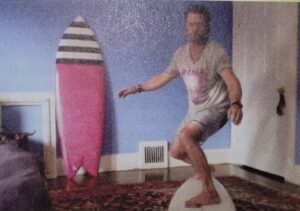Deep Work Vs. Shallow Work
SHALLOW WORK: Non Cognitively demanding, logistical-style tasks, often performed while distracted. These efforts tend to not create much new value in the world and are easy to replicate.
The Deep Work Hypothesis: The ability to perform deep work is becoming increasingly rare at exactly the same time it is becoming increasingly valuable in our economy. As a consequence, the few who cultivate this skill, and then make it the core of their working life, will thrive.
Two Core Abilities for Thriving in the New Economy
- The ability to quickly master hard things.
- The ability to produce at an elite level, in terms of both quality and speed.
If you haven’t mastered this foundational skill, you’ll struggle to learn hard things or produce at an elite level.
This brings us to the question of what deliberate practice actually requires. Its core components are usually identified as follows: (1) your attention is focused tightly on a specific skill you’re trying to improve or an idea you’re trying to master: (2) you receive feedback so you can correct your approach to keep your attention exactly where it’s most productive. The first component is of particular importance to our discussion, as it emphasizes that deliberate practice cannot exist alongside distraction, and that it instead requires uninterrupted concentration.
The Role of Deliberate Practice in the Acquisition of Expert Performance,” he dedicates a section to reviewing what the research literature reveals about an individual’s capacity for cognitively demanding work. Ericsson notes that for a novice, somewhere around an hour a day of intense concentration seems to be a limit, while for experts this number can expand to as many as four hours – but rarely more.
High-Quality Work Produced = (Time Spend) X (Intensity of Focus)
Malcolm Gladwell 10,000 hour rule
- Elite performer had each totaled 10,000 hour of practice
- Good students had totaled 8,000 hour of practice
- Future music teachers had totaled 4,000 hour of practice
Elite performers set goals and break down the process. They know exactly what process they are going to practice, what time, and location.
This illustration from 4 hour Chef: How Bradley Gerlach break down the process when he practices surfing.
He practices step 1 to get into perfect motion, then practice step 2. Once he practiced all 4 steps. He then combines all 4 steps together.
 |
 |
 |
 |





Leave a Reply